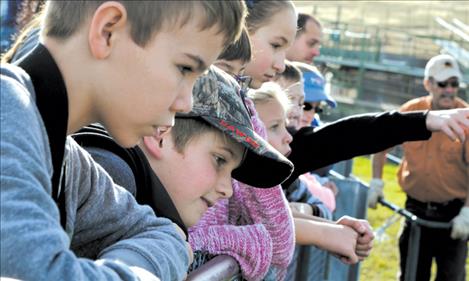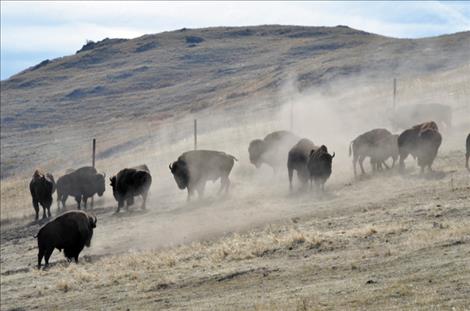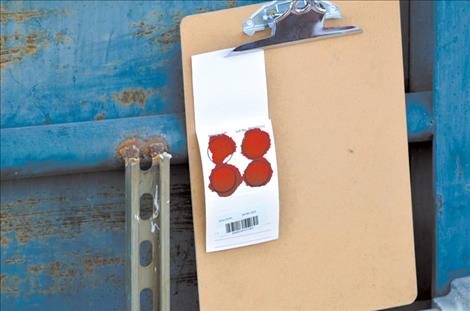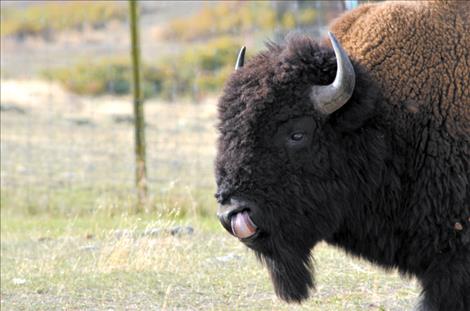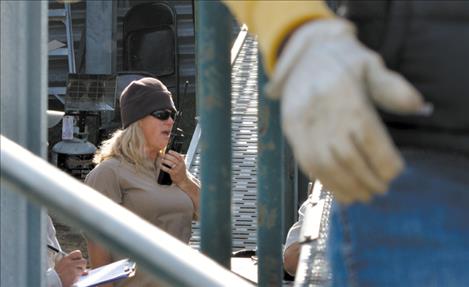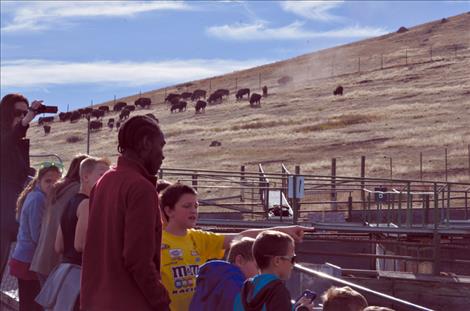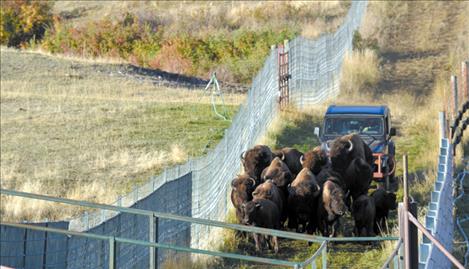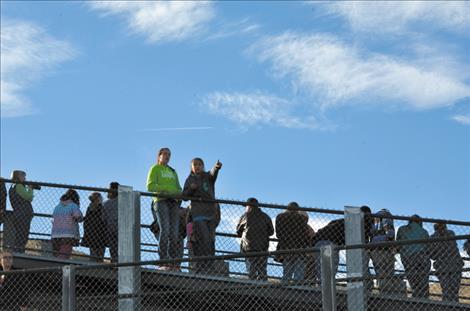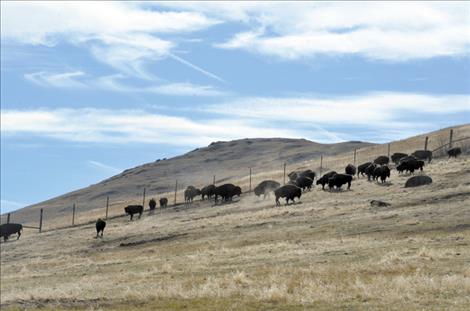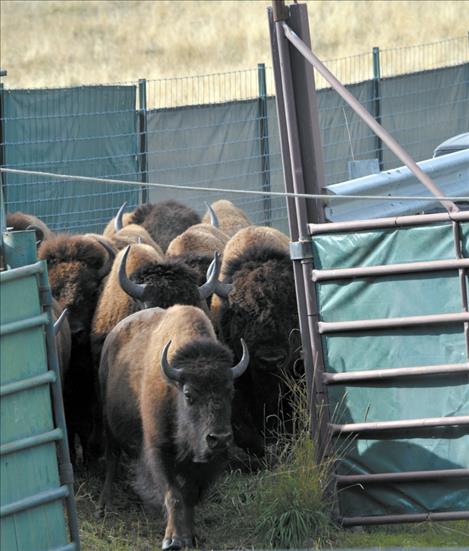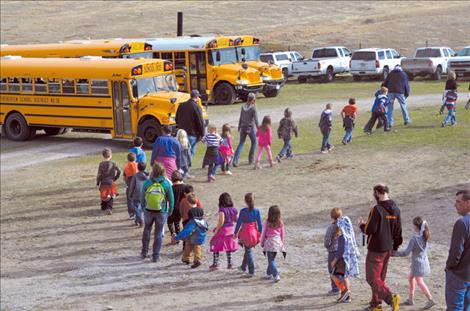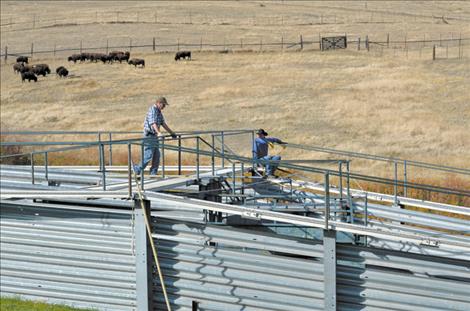Range of Motion
Hey savvy news reader! Thanks for choosing local.
You are now reading
1 of 3 free articles.
Hundreds of school children filtered onto the Bison Range throughout the two-day roundup starting on Monday to watch as wild bison were moved into the corrals for an annual health check-up. Many of the children reacted with wide eyes saying “awhh” and “ooh” in unison.
“I’ve never seen one before,” said Tebarek Hill, 12, from Valley Christian School as he watched a bison calf being gently squeezed into a chute. The metal chute held the calf still to prevent injuries during the checkup.
The bison are individually weighed, blood is drawn to check for disease and genetics are tested with a hair sample. Each animal also has a small chip the size of a grain of rice inserted under their skin. The chip contains each animal’s health history and genetic information.
“The whole process happens as quickly as possible,” said Amy Lisk-Thomas, Bison Range biologist with the U.S. Fish and Wildlife Service.
Management efforts are also used to reduce the size of the herd each year to maintain a comfortable average of about 300. Several yearling to 4-year-old calves are sorted out from the herd after their health check. An average of about 20 bison are donated to Native American Tribes and health research each year, and others are sold during a silent auction. This year 45 bison were sold.
Every year, range staff try and do something before the roundup to improve bison movement through the coral system, and this year, the alley was extended. The bison are moved down the alley, which is a long line of fencing, before they reach the corrals. The extension was added to give the bison more room.
“We want them to be the least amount of worked up,” Amy said. “If they aren’t worked up out there, we have less injuries.”
The bison are followed down the alley with a Jeep to make sure they get to the corrals. In the past, a horse and rider moved the bison.
“We watch to see if they are displaying any signs of capture, which would be fighting or shaking,” she said. “We haven’t seen that, so we will continue to use the Jeep. It’s also used for human safety.”
During the rest of the year, the bison are either rotated throughout the range or left to wander. The traditional grazing system includes a rotation through the range from the south side in the winter to the north side in the summer.
“We are experimenting with some shorter rotations,” Amy said. “We want to move them more frequently for the vegetation. If they eat it down too far, it won’t grow. And in a year like this when it’s so dry, that is hard to do.”
The range staff are working on ways to get the bison to rotate throughout the range on their own.
“We are experimenting with passive management as opposed to physically rotating them,” she said. “We are looking at reasons why they stay in certain areas and what we can do to make other places more appealing.”
The roundup depends on the staff members and the many volunteers that help each year. A few volunteers have logged more than 30 years of volunteer service with the roundup .
“We also have a really nice prayer and calling of the buffalo on the first day before the park opens, where the elders bless the process,” she said. “We have many people involved with the roundup.”
The Mission Valley Ambulance was on site in case any accidents occurred. Emergency Medical Technicians Joe Mitchell and Sean Mullins volunteered their time, although they said the most they did was patch up a scrapped knee.
“We would much rather be idle than busy,” Mitchell said adding that being busy meant that someone had to be hurt. This is his fifth year volunteering at the roundup and he said he hasn’t had to do much since the range started using the Jeep instead of horses to move bison into the corrals.
Back up on the catwalk, Bison Range Visitors Service Specialist Gloria Schultz worked with many of the children. She explained what was going on down in the corrals and that the bison are let loose without a checkup if they get overly agitated.
“We want to make sure the bison are healthy,” she said as students watched biologists and staff members working with the bison.















